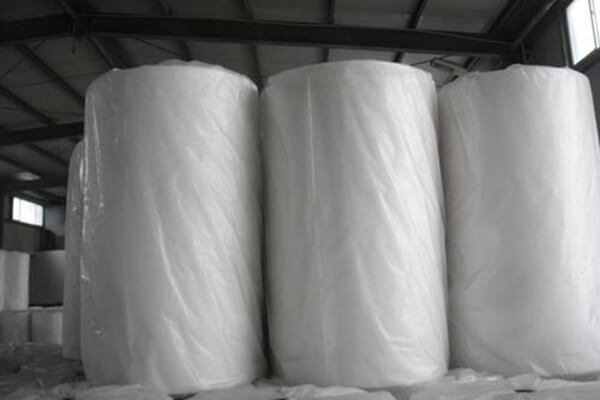The Use of Geotextile is Implemented in Accordance with Current Standards
Compared with soil model construction, reinforced geotextile produced by filament nonwoven geotextile manufacturers embankment has obvious advantages in terms of the construction period, quality, and safety. Advanced technology, reasonable craftsmanship, high work efficiency, and fast progress ensure the quality of the project, reduce the cost of the project, and have a wide range of applicability and promotion significance.
Understand the importance of foundation, slope, and seepage treatment, confirm the necessity of setting concrete birch under geological conditions, ensure the necessary step width and 4% inclination angle for excavation, and ensure the smooth connection of the steps with the blind ditch and the blind ditch exit. Ensure the smooth flow of seepage and drainage. The filling aggregate shall comply with the regulations and shall comply with the provisions of the special technical terms of this bid section.
Technical requirements for geotextile construction. The use of high quality filament nonwoven geotextile should comply with current standards and should comply with the recommendations of the Geotextile and Geomembrane Committee.
The type of filler supervision (inspection) involves the following parameters: density-compactness; representativeness of GTR material classification; homogeneity; determine the application range of the material according to the nature of the material (particles, plasticity index and methylene blue value of the soil); 0/ D particle size distribution; mechanical properties obtained. The filler is mainly coarse-grained soil, and the soil with a higher friction coefficient of gravel soil and sand is used as the filler, which is beneficial to the stability of the filler body. This article expresses roadbed filler as granular material to distinguish it from fine-grained soil.

Key points of using geotextile
1. Substrate treatment. According to the geological characteristics, treatment measures such as replacing the basement, excavating large foundation steps, and waterproofing and drainage have been taken.
2. Slope treatment. Before construction, remove all the original side slopes of the embankment and dig the side slopes into 3-5 meters wide steps, and the next step is 8 meters wide. A slope is set between the steps, and the steps are covered with a 0.1m thick permeable material.
3. Water seepage treatment. Shale quickly softens when exposed to water and is easy to collapse and slide. Water seepage seriously endangers the long-term stability of the dike. Vertical and horizontal blind ditches are arranged at the base of the embankment, and the blind ditches and the stepped underground continuous wall form an underground waterproof and drainage structure.
4. Formwork and geotextile. The template should be set on the side slope of the reinforced embankment, made of square timber and plank, and fixed with brackets. The construction sequence is as follows: base handling lifting bracket, lifting formwork, lifting polypropylene nonwoven geotextile factory price, lifting, and testing lifting filler.
5. Layered filling. The reinforced embankment must not be too wide and must be filled with materials. The particle size of the filler with a friction angle of not less than 35° is less than 2/3 of the filler layer.
6. The paving should be level. In order to ensure the accurate laying of the filament nonwoven geotextile for sale, elevation piles are set at intervals of 15-20 meters in the longitudinal direction of the subbase and marked with hanging lines. The filling level is leveled with a bulldozer, and the leveling machine is leveled, and the control layer has no obvious unevenness.
7. Roll compaction. The driver should define the start and end range of rolling, the number of rolling and the speed of rolling; the principle of roller compaction should be static first, then move, slowly first, and then fast. The rolling should overlap with each other and be compacted. The lap length is not less than 2m in the longitudinal direction, 0.4m in the transverse direction, and not less than 0.5m from the edge of the template. The water content has a significant influence on the rolling effect. The water content of the aggregate is controlled within the construction allowable range determined by the process test. If the water content is inconsistent, it can be solved by sprinkling or drying.
8. Embankment reconstruction. Embankment renovation includes drainage cross slope, flatness, and slope rate of 4% wholesale filament nonwoven geotextile filling layer, and the renovation is carried out according to the designed structure.
The main points of using geotextile: the laying direction should be consistent with the stress direction the geotextile bears, and the joint should not be less than 0.3m. The vertical spacing of the geotextile is 0.4m, the horizontal length is determined according to the design, and the length of the geotextile wrapped outside the slope is 2m.
